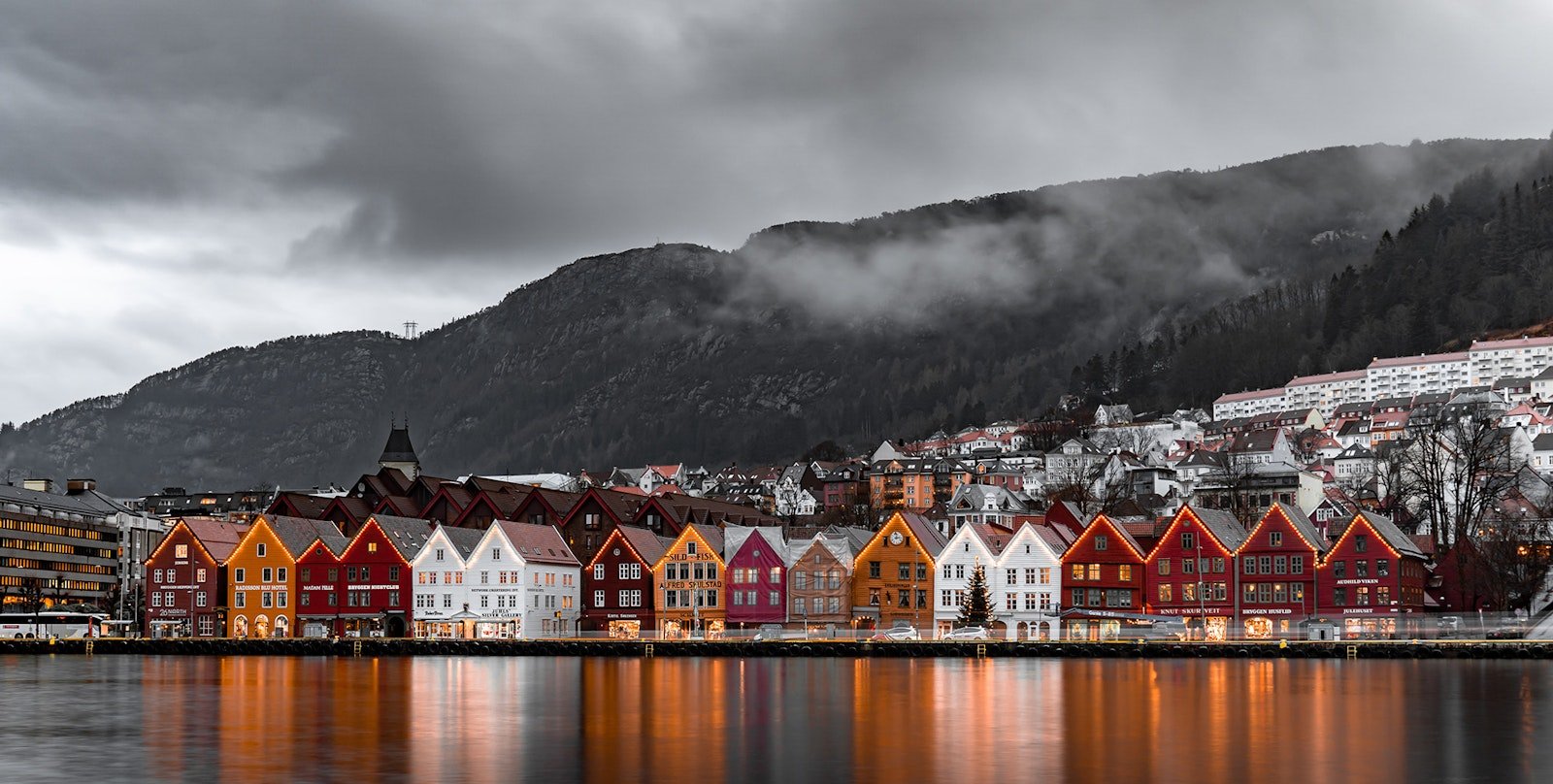From the Egyptian collections of the British Museum to the pre-Colombian artifacts at the Amano Museum in Peru, museum collections are the guardians of textile history. We are still rediscovering techniques of the ancients through textile collections, but even some traditions of the nineteenth and twentieth centuries would be in danger without the conservation and educational programs of museums around the world and the efforts of the curators who help us understand the cultural value of precious textile artifacts. Here's Laurann Gilbertson, Chief Curator of the Vesterheim Norwegian-American museum to tell you how textiles were treasured by Norwegian emmigrants leaving their homes for a distant land. ––Anita
 | |
| Wall hanging woven in brocading technique by Lila Nelson, Minneapolis, Minnesota, 1987. |
Now numbering 24,000 objects, the collection that makes up Vesterheim Norwegian-American Museum in Decorah, Iowa, started in 1877 as a study aid for students attending Luther College. By 1895, faculty and alumni officially resolved that Norwegian immigrant materials should be a stated focus of the collection. In doing so, the museum became one of the earliest pioneers in the preservation and interpretation of America’s cultural diversity.
Some of the museum’s best textiles came as a gift from Norwegian museums in 1925. The gift was assembled to honor 100 years of emigration from Norway and was intended to help Norwegian Americans remember their cultural heritage.
After WWII, the museum evolved into a national museum, in terms of both audience and collection. The museum became an independent institution in 1964 and adopted the name “Vesterheim,” which was the term that immigrants used to describe America when writing letters home to Norway.
Vesterheim’s textile collection consists of 5,500 items, including decorative and household textiles, clothing, and clothing accessories. We often talk about the collection in terms of origin: items brought from Norway and items made here. The items brought by emigrants from Norway make up about one-quarter of the textile collection. They include items needed for the journey, like bedding, and items they expected they would need in their new homes. Women expected to continue working with wool in the U.S., so they packed carders, spinning wheels, and sometimes even looms into the family luggage.
Most emigrants were well enough informed that they knew they would be wearing American fashions here, so they did not usually bring complete outfits of folk dress. But they did often bring small items of folk dress to remember a place or person or their old lives. There were also items considered too “valuable” to leave behind, like sweetheart gifts and engagement presents, which were often textiles or textile tools.
Items made or used by Norwegian immigrants and their descendants in the U.S. make up about three-quarters of the textile collection. Vesterheim is interested in the immigrants and their everyday lives, special occasions, occupations, and industries. Of particular interest are objects that show a blending of Norwegian and American handicraft and the work of contemporary artists working “within” the tradition.
 | |
| Closeup of the Monk's belt (tavlebragd) coverlet woven by Kari Staarvik, Lom, Norway, mid-1800s |
Comforter 1985.092.008 shows the adaptation of a Norwegian form of bedding to an American form. The front is a Norwegian monk’s belt coverlet woven by Kari Kongelhaugen Staarvik shortly before immigrating to western Minnesota in 1867. At some point Kari or her daughter Mari added thick batting, a flannel backing, and tied the layers together with colorful yarn creating an American-style tied comforter.
Textiles have often been an important link between the U.S. and Norway as well as a way for Americans of Norwegian ancestry to connect to their heritage. Alma Pettersen Guttersen immigrated as a child and returned in her retirement years to learn tapestry weaving. Among her works was a copy of the Baldishol tapestry, believed to be Norway’s oldest picture weaving.
In addition to core and special exhibitions of textiles, Vesterheim offers fiber arts classes, textile symposia, and textile study tours to Norway.
—Laurann Gilbertson, Chief Curator

